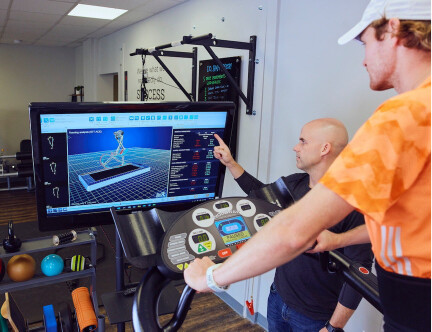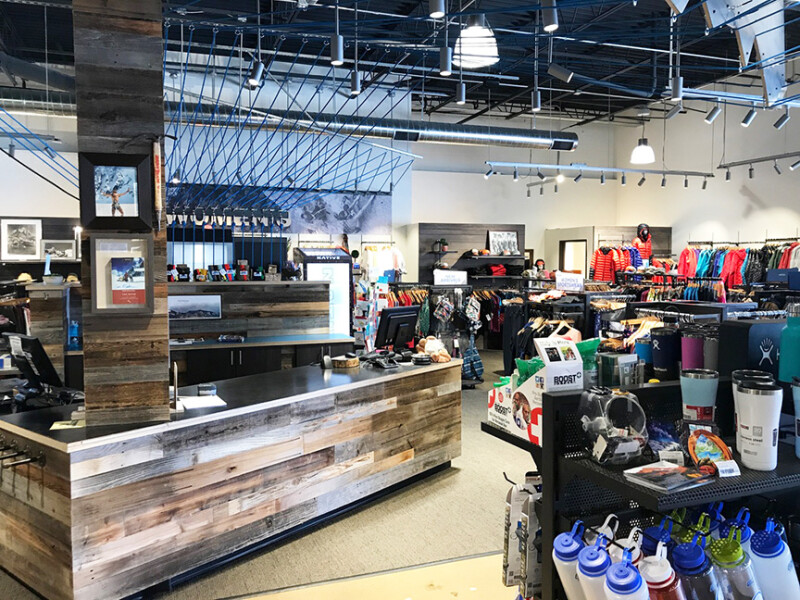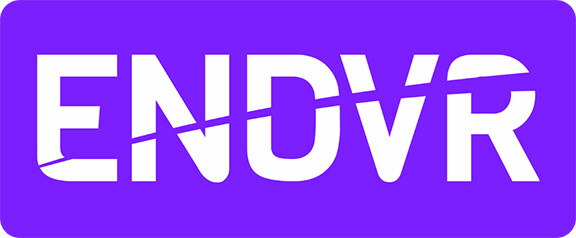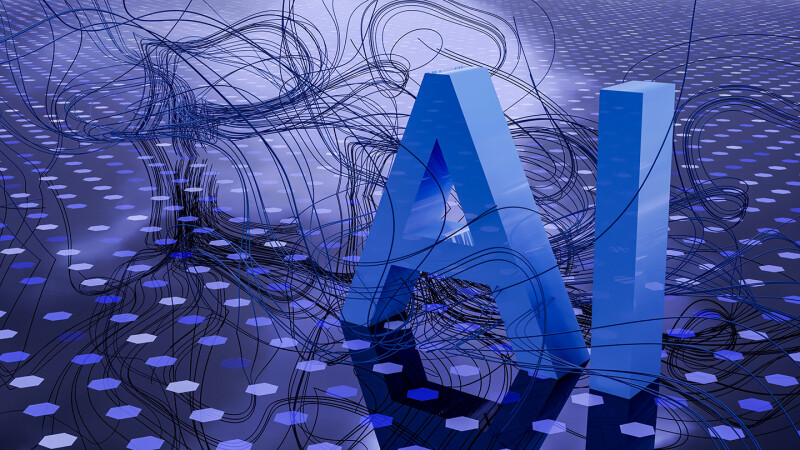As run specialty continues to evolve, running retailers are constantly seeking innovative ways to provide exceptional experiences to their customers. One such innovation that holds immense potential is 3D motion analysis for running. In this article, we explore what 3D motion analysis entails and highlight how it can revolutionize the operations of running retail.
Understanding 3D Motion Analysis
Running is a highly skilled movement that involves whole-body coordination in all planes of motion. To truly understand running form, you need accurate and reliable data that gives a complete picture. 3D motion analysis uses high-speed cameras, specialized sensors and advanced software to provide a comprehensive evaluation of a runner’s biomechanics (how their body is moving). 3D also provides a detailed assessment of a runner’s gait, posture, joint angles and overall movement patterns.
There are different types of 3D motion analysis depending on the technology used.
• The gold standard is optical marker-based 3D. This technology works similar in its functionality to a GPS. Reflective sensors are placed on the body at specific locations. Cameras are placed around an area where the subject will run and are calibrated to know where each camera is in relationship to the other cameras. When at least two cameras see a marker, they can triangulate its position. With enough sensors, the cameras collect data that enables the software to render an accurate 3D representation of the runner.
• Other types of 3D motion analysis include Inertial Measurement Units (IMUs) and pose-based methods for markerless 3D. There are advantages and disadvantages to these alternatives.
IMUs allow runners to run outside by using local sensors with an accelerometer and gyroscope that do not rely on the cameras being able to see the runner. Unfortunately, most commercially available sensors fail to provide accurate results as a result of the high impacts and rate of forces they endure. There is also a difference in capturing a complete segment (mark-based systems) and having a few sensors placed throughout the body. In their current state, most IMUs offer limited and often inaccurate data.
Markerless systems for 3D use depth-sensing video cameras to create a 3D model of subjects. While there is often less time needed to perform a markerless 3D capture, accuracy is the largest challenge because all bodies are unique. It can be challenging for markerless systems to identify the specific spots that marker-based systems easily identify with marker placement. The best uses for markerless-based systems at this time are in identifying people in a crowd (for example, how many people visit a state park each day), but they are limited in providing biomechanical data, save for higher-caliber systems costing $500,000.
No matter what hardware used, software is a key aspect of a 3D system. The hardware provides the data points that the software then turns into usable 3D data. 3D software has made considerable advancements over the last several years to provide data at or near real-time. .
Benefits of 3D Motion Analysis for Retailers
Running retailers are often the first stop when a runner has a question or issues related to running. Expanding services to include 3D motion analysis provides several key benefits to runners that will keep them running and keep them loyal to the store that helped them. The more they are running, the more they are purchasing shoes, nutrition, apparel and equipment.
Among the main benefits 3D Motion Analysis for runners:
• Injury Prevention. One of the foremost advantages of 3D motion analysis is its ability to detect potential issues in a runner’s form that may lead to injuries. While there is no perfect form, there are characteristics of running form that may contribute to overuse injuries. Armed with this information, runners and their coaches can design targeted training programs, correct form flaws and make necessary adjustments to minimize the risk of injury.
• Enhancing Performance. Achieving optimal running performance requires more than just raw speed and endurance. Efficient running mechanics can significantly enhance performance, enabling runners to conserve energy, maintain better form throughout a race and ultimately achieve faster times. 3D motion analysis helps identify areas for improvement, such as overstriding, enabling runners to make targeted adjustments and enhance their running economy.
• Personalized Training Programs. Every runner is unique, and their optimal running form may differ based on various factors such as body structure, flexibility and running experience. 3D motion analysis enables personalized assessments by capturing an individual’s precise biomechanics. This data can then be used to develop tailored training programs that focus on specific areas of improvement, taking into account an individual’s strengths and weaknesses. With personalized training, runners maximize their potential, reduce the risk of injury and experience greater overall success in their running journey.
With that knowledge of how 3D motion analysis can befit their customers, it is simple to see how those benefits can be translated to run specialty retailers.
•Expertise/Differentiation. In an increasingly competitive market, running retailers need to provide unique value propositions to set themselves apart. By incorporating 3D motion analysis into their services, retailers can offer customers a level of expertise and personalized attention that goes beyond traditional shoe fitting.
With the ability to assess a runner’s biomechanics, identify form flaws and make appropriate footwear recommendations, running retailers can position themselves as trusted experts who prioritize their customers’ individual needs and performance goals.
• Enhanced Customer Experience. The implementation of 3D motion analysis can transform the customer experience within running stores. Rather than relying solely on subjective feedback and visual assessments, retailers can provide customers with objective data on their running mechanics.
This data-driven approach instills confidence in customers, assuring them that their shoe selection is based on scientific analysis and tailored to their unique requirements. By empowering customers to make informed decisions, retailers create a more engaging and interactive shopping experience, leading to increased customer satisfaction and loyalty.
3D motion analysis allows running retailers to offer this highly personalized product recommendation to their customers. By analyzing a runner’s gait and foot mechanics, retailers can identify specific shoe features that will address their individual needs, such as cushioning, stability or motion control.
This level of customization enhances the likelihood of customers finding the ideal footwear that maximizes comfort, minimizes injury risk and improves performance. By aligning customers with the right products, retailers can significantly reduce the rate of returns and exchanges.
• Additional Revenue Generating Services. Outside of enhancing current products and services, 3D motion analysis offers the opportunity to create new revenue streams. Running retailers can charge for the 3D motion analysis services, as well as offer related services such as coaching based on this knowledge of a runner.
The golf industry offers a great example of how this model is successful. Using readily available technology on swing analysis and other factors, golf professionals provide lessons and recommendations on technique and training regimens that help their clients achieve new levels of success. There are limited resources for runners to get this same type of interaction and running retailers often have the knowledge and experience to provide these services to runners.
• Data-Driven Business Strategies. The wealth of data generated through 3D motion analysis presents running retailers with a valuable opportunity to analyze trends, identify patterns and make data-driven business decisions. By aggregating and analyzing customer data, retailers can gain insights into the preferences, needs and buying behaviors of their clientele.
This information can inform inventory management strategies, help optimize product assortment and identify potential areas for expansion or improvement. With access to robust data, running retailers can refine their business operations and tailor their offerings to meet the evolving demands of their target market.
The Potential of Technology
The incorporation of 3D motion analysis in the realm of running retail has the potential to revolutionize the industry.
By leveraging this advanced technology, running retailers can elevate their expertise, enhance customer experience, provide personalized recommendations and optimize their business strategies.
Embracing 3D motion analysis opens new avenues for growth, differentiation and customer satisfaction, enabling running retailers to thrive in a highly competitive landscape.
About RunDNA
RunDNA offers a solution for a running retailer looking for a trusted partner guiding them into the 3D motion analysis space. Its Helix 3D is a portable and affordable 3D motion analysis system that is backed by a systematic approach to working with runners. For more on its free Essential Elements of Running course: RunDNA.com
.






